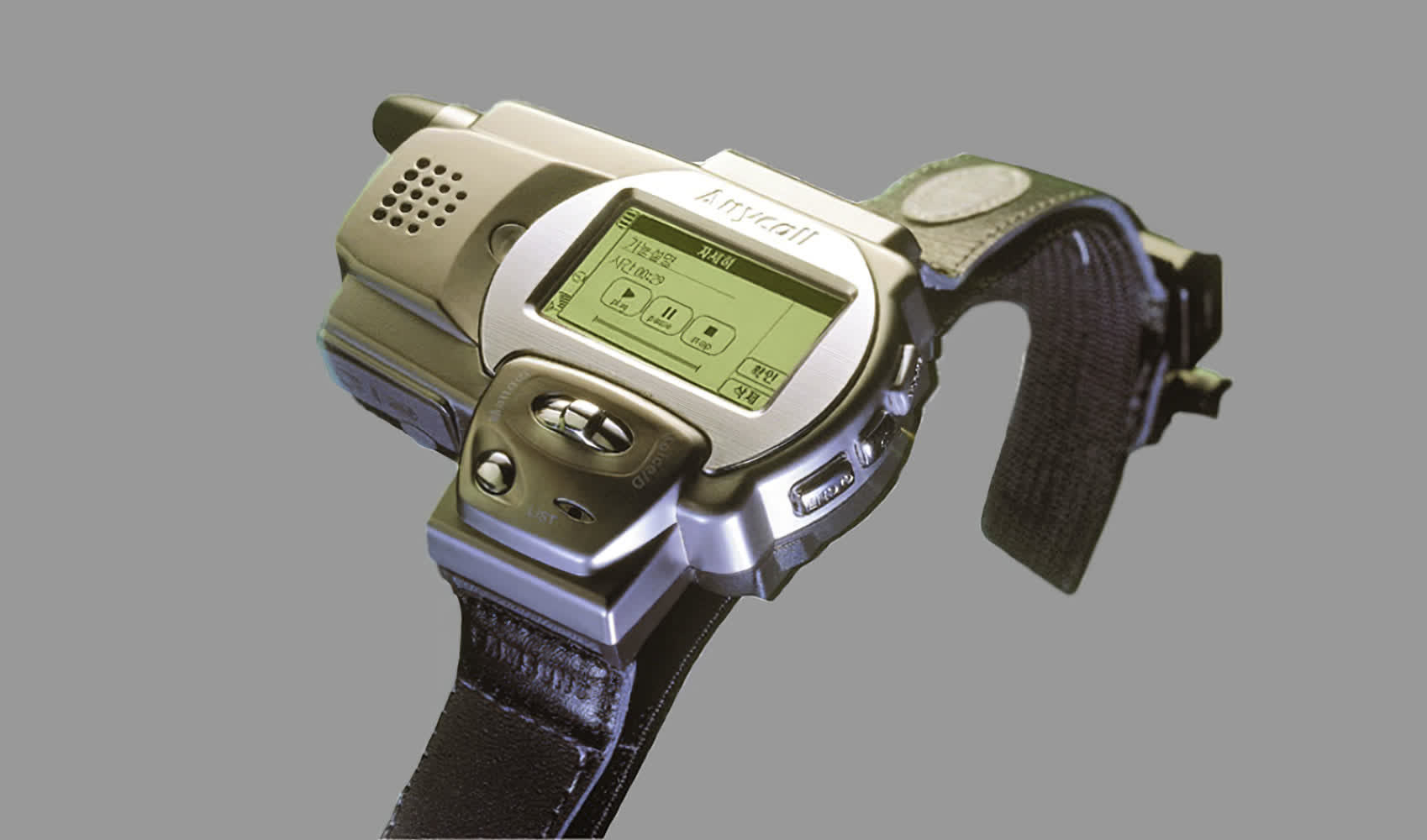Apple Watch Series 3 (2017)
Seiko MessageWatch (1995)
Choose wisely! The correct answer, the explanation, and an intriguing story await.
Correct Answer: Samsung SPH-WP10 (2000)
A little background

Taking inspiration from the futuristic wrist-worn communicators depicted in science fiction, Samsung unveiled the SPH-WP10 in March 1999, marketing it as the world's first CDMA watch phone. It was hailed at the time as the smallest and lightest wireless terminal available, a significant milestone in wearable communication devices.
Released to the public in April 2000 at approximately $700, the Samsung SPH-WP10 featured several notable innovations for its era. The watch phone included a distinctive protruding antenna designed to optimize reception, a 1.5-inch backlit monochrome LCD for clear viewing, and both an integrated speaker and microphone for seamless calling capability. Remarkably compact, the device weighed just 50 grams, including the battery, making it comfortably wearable despite its advanced functionality.
In terms of battery life, the SPH-WP10 supported up to 90 minutes of talk time and approximately 60 hours of standby. While impressive for its size, these limitations, alongside its relatively high price and unconventional design, contributed to limited commercial success, with only a few thousand units ultimately sold.
Although the Samsung SPH-WP10 was groundbreaking as a communication device, the concept of multifunctional wristwatches predates it significantly. As early as 1975, watches began integrating additional functionality, exemplified by the Pulsar Module 1, which featured an embedded calculator. In 1982, the Seiko TV Watch pushed boundaries further by integrating a small display and a portable, Walkman-sized receiver, enabling wearers to watch analog television broadcasts directly on their wrists.
Here's a quick breakdown of different devices that marked milestones for wrist wearables:
- Pulsar Module 1 (1975): Notable as the first watch with a built-in calculator, it represented an early stage in the evolution of multifunctional wristwatches, though it lacked communication capabilities.
- Seiko TV Watch (1982): This innovative watch featured a tiny screen and required a separate, portable receiver box, allowing users to watch analog TV broadcasts. While groundbreaking, it didn't support two-way communication.
- Seiko MessageWatch (1995): An early form of smartwatch, the MessageWatch allowed users to receive paged text messages but did not support voice communication.
- IBM WatchPad (2000): A collaboration between IBM and Citizen that was among the first smartwatches but notably did not offer cellular calling features.
- LG GD910 (2009): One of the first mainstream watch phones featuring 3G connectivity, voice calling, video calling, and a touchscreen.
- Apple Watch Series 3 (2017): Popularized cellular connectivity in smartwatches, allowing users to make and receive calls independently from their smartphones.








 English (US) ·
English (US) ·